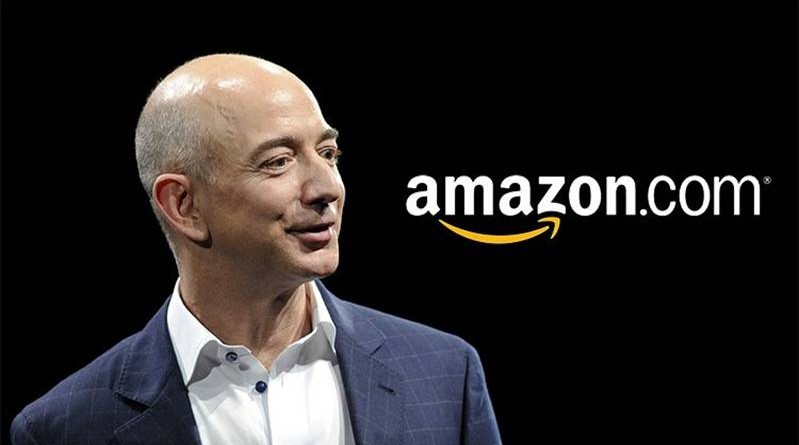How Amazon boss, Jeff Bezos, makes the right decision 30 years in advance
Throughout the years, many people have doubted Jeff Bezos and Amazon.
He’s most famous today for being the richest person alive, and while his image in the media oscillates between both good and bad, one thing is for certain — no one doubts him anymore. Amazon is an absolute giant of a company.
That said, for the first 20 or so years, things were different. They almost never made a profit, they seemed to lack focus, and their corporate valuation was universally acknowledged as being out of touch.
Yet, if you had really, really paid attention to what Jeff Bezos was saying during this time, you would have known that none of that criticism mattered.
He had a simple, but very effective decision-making system that almost guaranteed that what he was doing was exactly what he should have been doing. The world was looking at a checker’s board while he was playing chess.
The foundation of his secret is that he was on an entirely different time-horizon. He didn’t care to win over a period defined by someone else, whether that be the media or Wall Street; rather, he was doing his own thing today while being relentlessly focused on tomorrow.
Observing this, if there is one skill that separates Jeff Bezos from other effective CEOs — and really most people in general — it’s the ability to make optimal decisions in the face of a future he doesn’t fully understand.
Most of us have to make similar decisions all the time, and these decisions are incredibly important, and their consequences can ripple for decades.
Having a framework is absolutely crucial. Luckily, we can steal one.
Vision as directional orientation
The biggest paradox we face when it comes to decision-making is that we are forced to make decisions now about something that doesn’t exist.
Who’s to say that you will be as happy with your choice of work out of college, or the spouse you decide to marry, in 10 years — when you’re a different person and living in a different reality — as you were when you made it?
In fact, the chances are that you won’t be. Things happen and people change.
More importantly, the future is unpredictable. It doesn’t yet exist. We live in a complex world with an infinite number of variables that interact with each other to lead us down a certain path. And because of that fact, there is a broad distribution of probabilistic outcomes that can occur.
And yet, without a long-term compass to guide us, it’s hard to be intentional about our day to day actions. We need to have a rough idea of where we want to be in 10 to 20 to 30 years. We have to do something.
In this case, the solution isn’t a specific vision or an external metric of success, but a general directional orientation based on the evidence from your past—nothing too specific, but still a thing worth striving towards.
When it comes to making the most important and the most long-term decisions, Bezos has a simple rule that’s quite useful: “Focus [your vision] on the things that won’t change.”
At Amazon, this means that everything is built around their value of customer obsession. They don’t try to hop on every new fad because they don’t know which one will still matter. They do, however, know that in 20 years, customers will still want faster deliveries and cheaper products. They can build a future around making that a primary area of focus.
Similarly, if you’re 30 years old, you may not be able to say exactly how your personal taste will evolve tomorrow, but you can be reasonably sure that if you have enjoyed being creative for 20 years, then the next 20 years likely won’t change that. You can build a career around that.
Having a long-term focus gives you more control over the product of your actions, but that doesn’t matter if you don’t have a stable orientation.
The only way to get one is to determine what part of you will remain intact.
The slow guidance of tinkering
Once a directional orientation is decided, the focus turns closer to home. You have to actually figure out the steps you need to take to get there.
The problem at this point is that, if your directional orientation isn’t overly specific — it shouldn’t be — and if it’s a long, long way out—as it should be — then it’s hard to work backwards to determine clear day to day steps of action.
On top of that, it can be impossible to know where exactly to start. It’s easy to decide that you want to be remembered as a great artist in 30 years, but how do you decide what kind, or the details of how you are going to improve?
The answer is surprisingly simple. Test and then drop; tinker and then build.
Many people make the mistake early on in the lifetime of a big decision to take one path and stick to it. That’s generally not optimal because, again, it’s difficult to know what exactly you need or like until you have it.
What you really want is to explore many different paths and then experiment with each of them. If something is working, keep doing more of it. If leads to failure, use that failure as an information point to rule out options. This is how you harness both the benefit of strategy and serendipity at the same time.
While Amazon’s core value has always been customer obsession, they know that they can get there through various means. And although they began by selling books and then other retail items, they also made sure to experiment and explore in other avenues, like cloud computing, branded hardware, etc.
Today, a significant portion of their revenue, and much of their profitability, actually comes from seemingly random bets like cloud computing.
If they hadn’t taken the route of tinkering over prematurely choosing one or two specific paths, they wouldn’t have failures like the Amazon Fire phone, but they also wouldn’t have AWS, which brought in $20 billion in 2017, and Amazon Prime, which now has over 100 million paying customers.
Because the future is unpredictable, in the short-term, tinkering provides the optionality to explore the many different paths to see which one works as things play out in real-time rather than via unreliable predictions.
The world is constantly changing. To keep up, we have to allow for flexibility.
What not to do
The intuitive approach many people have to planning their future is to pick a specific medium-term goal and then work backward in exact steps. They imagine themselves five years ahead and put the remaining pieces together.
The problem, however, is that medium-term goals don’t allow for versatility. They are often too defined, which is an issue when dealing with uncertainty, and they are too brief, which rushes the patience you need to tinker.
While it might appear that having a directional orientation over 30 years is harder to justify than a five-year goal, the truth is that a long horizon stops you from making short-sighted choices, and more importantly, it gives you more control over the unpredictability of randomness.
This was exactly the reason people doubted Jeff Bezos and Amazon for all those years. They were too focused on results over a quarter, and in the process, they failed to see how well they were being set up for the decade.
It’s easy to have luck work against you in a short time-frame, but it’s almost impossible to not succeed if you’re willing to put 30 years of work into it.
We live in a dynamic and changing world, and the only way to make effective decisions in such a world is to avoid static frameworks. We have to allow a degree of fluidity and openness in how we make choices.
The future may be unpredictable, but it doesn’t mean that you can’t shape it.
This post was originally published on Medium.



